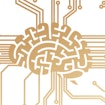Neural correlates of sensory hypersensitivity in autism spectrum disorder Most individuals with autism experience at least one form of hypersensitivity from the five senses. These alterations in sensory-related behaviors can lead to profound limitations on an individual’s ability to work, interact with family and participate in leisure activities. Furthermore, these atypical responses to otherwise normal sensory stimuli may be closely associated with the core symptoms of autism, such as social deficits and repetitive behaviors. Despite the importance of sensory abnormalities in the pathogenesis of autism, how the brains of individuals with autism receive information from the five senses at the subcortical level and how such information becomes transformed into aversive responses has not been investigated.

